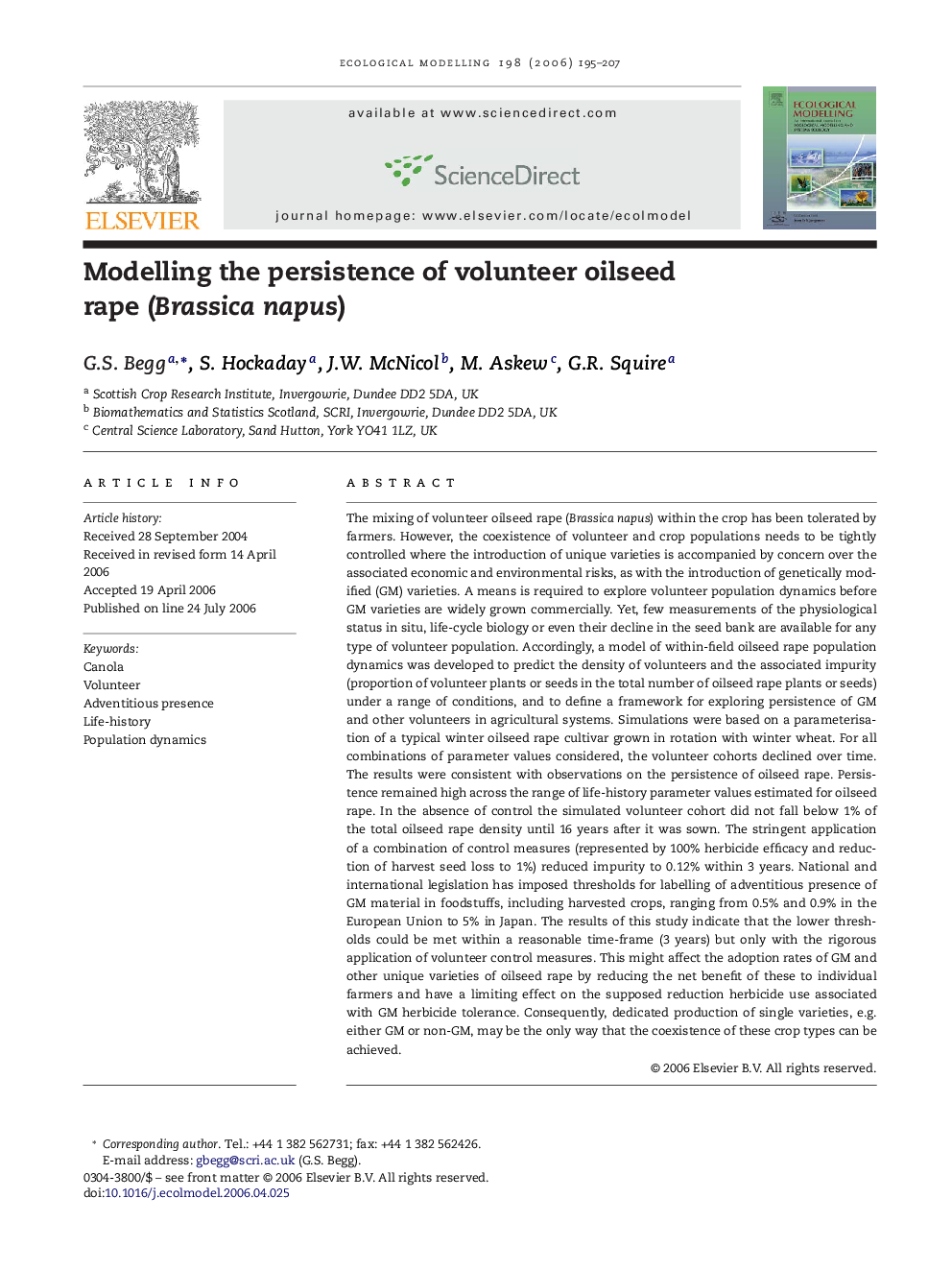| کد مقاله | کد نشریه | سال انتشار | مقاله انگلیسی | نسخه تمام متن |
|---|---|---|---|---|
| 4378847 | 1617558 | 2006 | 13 صفحه PDF | دانلود رایگان |

The mixing of volunteer oilseed rape (Brassica napus) within the crop has been tolerated by farmers. However, the coexistence of volunteer and crop populations needs to be tightly controlled where the introduction of unique varieties is accompanied by concern over the associated economic and environmental risks, as with the introduction of genetically modified (GM) varieties. A means is required to explore volunteer population dynamics before GM varieties are widely grown commercially. Yet, few measurements of the physiological status in situ, life-cycle biology or even their decline in the seed bank are available for any type of volunteer population. Accordingly, a model of within-field oilseed rape population dynamics was developed to predict the density of volunteers and the associated impurity (proportion of volunteer plants or seeds in the total number of oilseed rape plants or seeds) under a range of conditions, and to define a framework for exploring persistence of GM and other volunteers in agricultural systems. Simulations were based on a parameterisation of a typical winter oilseed rape cultivar grown in rotation with winter wheat. For all combinations of parameter values considered, the volunteer cohorts declined over time. The results were consistent with observations on the persistence of oilseed rape. Persistence remained high across the range of life-history parameter values estimated for oilseed rape. In the absence of control the simulated volunteer cohort did not fall below 1% of the total oilseed rape density until 16 years after it was sown. The stringent application of a combination of control measures (represented by 100% herbicide efficacy and reduction of harvest seed loss to 1%) reduced impurity to 0.12% within 3 years. National and international legislation has imposed thresholds for labelling of adventitious presence of GM material in foodstuffs, including harvested crops, ranging from 0.5% and 0.9% in the European Union to 5% in Japan. The results of this study indicate that the lower thresholds could be met within a reasonable time-frame (3 years) but only with the rigorous application of volunteer control measures. This might affect the adoption rates of GM and other unique varieties of oilseed rape by reducing the net benefit of these to individual farmers and have a limiting effect on the supposed reduction herbicide use associated with GM herbicide tolerance. Consequently, dedicated production of single varieties, e.g. either GM or non-GM, may be the only way that the coexistence of these crop types can be achieved.
Journal: Ecological Modelling - Volume 198, Issues 1–2, 15 September 2006, Pages 195–207